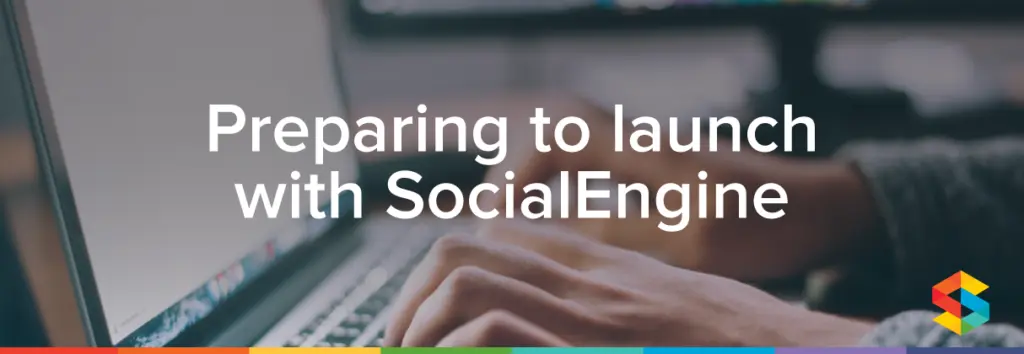
Welcome back! We hope you’ve enjoyed our previous articles and found them helpful. Today we’d like to talk to you about something we think is both very important and foundational, preparing to launch a social network with SocialEngine. We want to make sure that both our Cloud and Self-Hosted users can benefit from this article so we’ve made sure that the tips below work for both SocialEngine Cloud and SocialEngine Self-Hosted. Let’s dig right in!
Reduce Spam
Everyone hates SPAM. It clutters your site, can be dangerous to your users, and generally undermines any legitimacy your site may have. Obviously it’s very important to keep your community free from spam. Here are a few ways to do that:
In SocialEngine Cloud, the most effective way to control spam is by setting your community posts to require approval before appearing live on the site. This would mean that no post would go live without your moderators’ approval which would filter out any SPAM-ey posts.
If you’re concerned about comments, you can use the built-in Disqus integration which has its own anti-spam measures. You can check out more about the Disqus anti-spam tools HERE.
Another way to attack SPAM would be to do so right at the entry point to your site. You can set registration settings to “invite only” which would require new members to be invited before they can join your community. This would drastically reduce, if not eliminate all SPAM bots or SPAM accounts created to infiltrate your site.
But what about SE Self-Hosted? We’ve got you guys covered too! In SocialEngine Self-Hosted, the “Spam and Banning Tools” settings allow you to use the integrated Google reCAPTCHA anti-spam feature. In addition to that, you can set the member level permissions per plugin and disable posting such as with blogs. Members can also be set to require approval before they can use the site or even set the registration to “invite only” and require invitations.
Generate Content
The process of planning a good site launch is a big endeavor. There are tons of moving parts and things that a community creator needs to juggle and in doing so it is not uncommon for the creator to overlook one of the most crucial parts of the launch. Content. You need content on your site in order for new users to have something to do, something to see and a reason to interact on your brand new community. Having some great starting content will encourage your members to comment, share, and post their own content. After all, you wouldn’t want to go to a store opening and find the shelves bare, right? The same goes for your community.
Post some blogs, photos, and other items in order to fill up your site with some starting content. Get your family, friends and work colleagues to help with this. You can even offer early access to said friends and family members. This would allow you to get some feedback on the user experience and would, at the same time, enable these early beta testers to provide valuable content. This way when you throw the doors open it will look like the community is already up and rolling!
No time? No problem! There are many places online, such as fiverr, that offer contractors that will do this for you if needed. If using a service to generate content, you’ll want to ensure that it’s relevant, quality content, and also using the same language of your site.
Check it with Various Browsers, Screen Sizes and Operating Systems
Here’s a trap that many fall into. Your website can look and perform differently based on the device, screen size, browser and operating system. Testing on various iOS, Android, MacOS, and Windows devices is highly encouraged if you have the ability to do so. Colors can change from browser to browser, themes may look one way on a desktop vs laptop, and various other issues can be seen when testing on various machines/mobile devices/browsers.
If you can’t test for yourself due to having limited devices, try to get some family, friends or colleagues to help you test. There are also emulators to use for testing different browsers, mobile views, and operating systems. You may even be able to test your website at a library, computer sales store or other location that may allow computer access. After all, it is important to get out of the development cave every now and then.
Try it with Test Users
In order to know how your members will interact with your site, you need to see it first hand. It’s best to have a test user in each member level you create. This allows you to see how things work from that perspective. Also, for security you should have your own “member” account that you use as your daily account and save the Super Admin accounts only for administration.
If you can get some help, have as many people as you can test your site and report any issues to you. You won’t find every issue but the tests can help ensure you have a smooth launch and that new members will experience your community in the best way possible. First impressions are such a HUGE thing, especially on the internet where there is a lot of competition for viewership.
We hope these tips help you to have a great launch! Good luck with your community! If you have any questions or need more help, please connect with us at the SocialEngine community.
“When something is important enough, you do it even if the odds are not in your favor.” ~ Elon Musk



